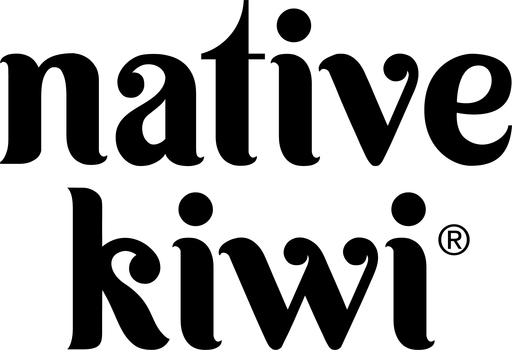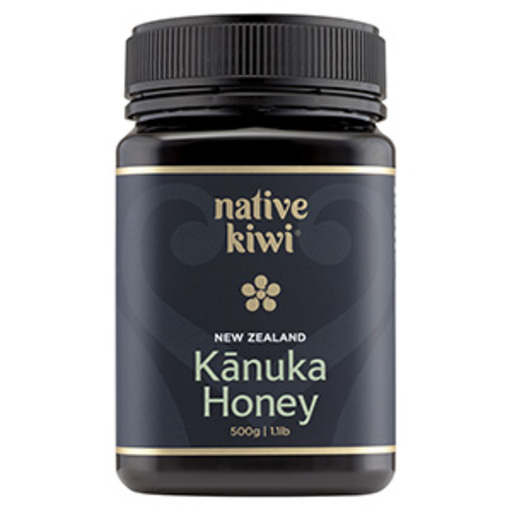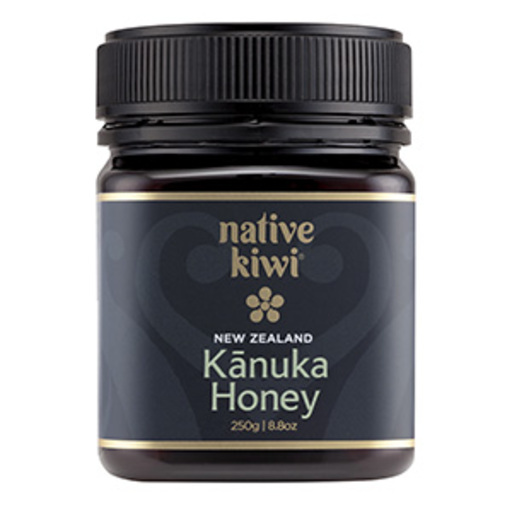
AQ Assured by AsureQuality, New Zealand's Government-owned food assurance company.
Native Kiwi Kānuka Honey
250g / 500g
PRODUCT ATTRIBUTES VERIFIED BY AQ ASSURED
- New Zealand made
- Independently tested
 Origin
Origin
New Zealand Kānuka honey is produced by bees collecting nectar from the Kānuka plant (Kunzea ericoides).
Kānuka plants can be found growing throughout New Zealand.
This product is made in New Zealand with honey sourced from hives in the Northland and Taupo regions.
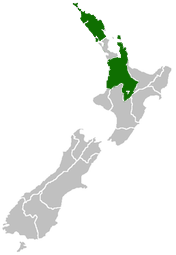
Northland
The Northland (Māori: Te Tai Tokerau) region of New Zealand comprises of 3 main districts, the Far North, Kaipara and Whangarei, with 13,286 km2 total land area.
Northland has a sub-tropical climate and is one of the warmest regions in New Zealand, allowing for long summers with parts receiving about 2000 hours of sunshine each year. The region is renowned for its coast lines, sparsely populated regions and is popular for local and international visitors.
The Far North of New Zealand, has an environment rich in coastal landscapes and wild native flora. Combined with the subtropical climate there are favourable growing conditions for Kanuka trees.
For Native Kiwi, the “Far North is where we are born, this is where we live.”
To learn more about Northland, visit https://www.nrc.govt.nz/.
Māori Mythology & Origins of New Zealand Honey
In New Zealand Māori mythology, ‘Io Matua Kore’ means the beginning of existence (energy, potential, the void, nothingness), which gave birth to Ranginui (Sky Father) and Papatuanuku (Mother Earth). They in turn gave birth to children such as Tangaroa (sea), Tane (forests and birds), Haumia (wild plants). These children created Te Tai Ao – (our precious natural forest environment) from which our bees harvest honey from.
Māori whakapa (history and values) started in the Pacific islands at Rarotonga as Ngati Io, from whom Maui came in a great Waka (canoe) and caught the ‘big fish’ Te Ika a Maui (New Zealand). The next great Polynesian explorer from the Pacific was Kupe, followed by other migration waka (canoes). A modern waka (sailing ship) from England in 1839 brought the first honey bees to New Zealand, establishing these in the Far North region. The ancestors of those bees along with new strains make the Native Kiwi honey today.
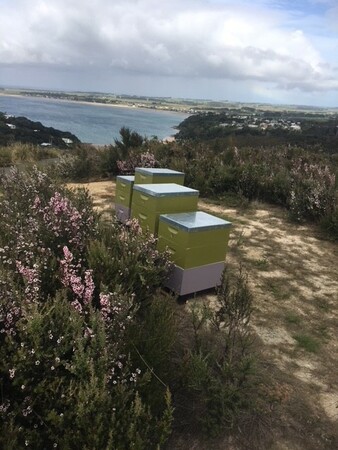
Taupo
The Taupo region (Maori: Taupōnui-a-Tia) is located in the centre of the country’s North Island, within an active volcanic zone. The area at 6,970 km2 is rich in forestation, lakes and old volcanic craters. It contains Australasia’s largest fresh water lake, Lake Taupo, which is about the same size as Singapore. Also in the region are Tongariro National Park, which holds World Heritage status, and Pureora Forest Park.
This is a land of strong contrasts. Plants vary considerably in this rugged landscape, from areas of alpine herbs, to tussocks and flax,to vast areas of natural Kānuka trees.
To learn more about the Taupo region, visit https://www.greatlaketaupo.com/.
Supply Chain
There are systems in place throughout Native Kiwi supply chain to ensure that each jar of their honey meets high standards of safety and quality.
The Apiary
 Apiary Assurances
Apiary Assurances
- The apiaries where the hives are located are registered with New Zealand’s Ministry for Primary Industries, and comply with annual hive inspection and reporting requirements.
- All honey hives are constructed with materials that meet New Zealand requirements. This means that the hives are not a source of hazard to the honey inside them.
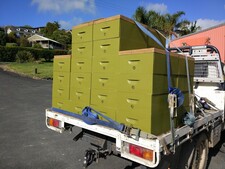
Honey boxes on their way to the bees with unique NFC id tags for traceability.
The Factory
The honey boxes are transported from the apiary to the extraction factory, accompanied by signed harvest declarations that detail:
- The apiary location that the boxes have come from
- The date they were harvested
- The identity of the person that harvested them
 Factory Assurances - Extraction
Factory Assurances - Extraction
- Honey is extracted from the honey frames and poured into drums to be stored
- Samples of honey are taken during the extraction process and tested by an accredited laboratory.
- The extraction factory is independently audited to ensure that it meets the requirements of its Risk Management Programme.
 Factory Assurances - Bottling
Factory Assurances - Bottling
- The drummed honey is used to fill food grade jars
- Each honey jar is labelled with a batch number for traceability
- The final product is tested at an accredited laboratory for authenticity and safety
- The bottling factory is independently audited to ensure that it meets the requirements of its Risk Management Programme
 Product is readied for transport to market
Product is readied for transport to market
Transport
The product is delivered from the factory to the appropriate distribution route
 Transport Assurances
Transport Assurances
- The transport company that delivers the product is required to have a current New Zealand Ministry for Primary Industries Risk Management Programme before it can carry any honey products, as per New Zealand’s Animal Products Act, 1999.
- This transport company is audited regularly by authorised personnel to ensure that the required standards are being met and maintained.
Shipping
This honey product has several distribution routes
Airfreight
- For product sold outside of New Zealand, through some online routes the honey jars are sent to the destination country via airfreight.
- The honey order is processed and tracked via barcoding and traceability systems until final courier delivery to the consumer.
Seafreight
- For Product sold outside New Zealand, through retail stores and some online routes the honey jars are sent to the destination country via sea freight
- The shipping company ensure that the products are accompanied by all export accompanied documents (EAD) that are required by the importing country
- Once cleared by customs, the product is sent to the distribution warehouse and allocated to various retail locations.
Retail
This honey carries the AQ Assured brand and QR code on the lid for consumers to scan and view more information on the safety and quality measures undertaken throughout the product supply chain.
 Environmental
Environmental
- the ability of natural ecosystems to maintain their biological processes and functions
Traditionally, Māori believe there is a deep kinship between humans and the natural world. This connection is expressed through kaitiakitanga – acknowledgement of the quality and vitality of the environment. For Native Kiwi this means being respectful to the land where bee hives are placed, and toward the owners of that land.
Native Kiwi believe in leaving our natural environment in a better condition for future generations. Bee keeping supports healthy bee populations. These bees perform the role of pollination, which is vital in sustaining the food supply for all living things.
Native Kiwi Bee Hives
Native Kiwi bee hives are manufactured from thermally modified New Zealand Radiata pine, grown sustainably in plantation forests. These hives are free from chemicals.
The timber used to make the hives is placed into a special chamber where it is exposed to temperatures of up to 220 degrees Celsius. Steam is added to prevent the timber from combusting. This process increases the durability of the wood as it burns off the edible sugar compounds upon which fungi live on.
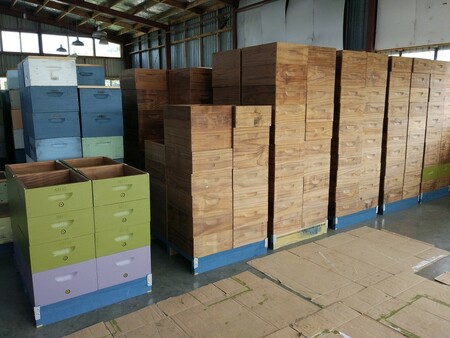
Honey boxes are assembled from natural and untreated wood grown in New Zealand.
Native Kiwi products are obligated to be produced in compliance with New Zealand's Resource Management Act (2009), and local council Resource Management Plans, which set out rules and regulations around management of the New Zealand environment.
These rules include:
- Disposing of waste in ways that prevent pollution
- Controlling manufacturing emissions to ensure air quality is maintained
- Using only approved chemicals in a way that will not harm the environment
- Operating within a safe distance of waterways to avoid erosion and protect water quality
The regulation and compliance monitoring of environmental concerns is performed by government-owned Environmental Protection Agency (EPA).
 Social & Ethical
Social & Ethical
- the ability to meet our own needs without compromising the needs of future generations
Native Kiwi is focused on creating opportunities that will contribute to the health and wellbeing of their local communities.
Working Together - Collaborative Enterprises
Native Kiwi aim to get more whānau (Māori family) involved in the valuable honey industry. Native Kiwi work collaboratively with Māori owned beekeeping companies, including Bee Wize Aotearoa, based in the Far North of New Zealand. Bee Wize Aotearoa draws on traditional Māori structures to achieve its goal of encouraging Māori land owners to become bee farmers on their own land. This is achieved by growing bee hive numbers owned by whānau, managing the beehives on their behalf until such time as the achievement of practical beekeeping skills linked to traditional Māori values and beliefs allows independent responsibility.
Native Kiwi leadership guide and mentor Bee Wize Aotearoa, supporting the joint aspiration that each whānau and iwi (Māori tribe) business is able to retain its individuality, be innovative and independent.
 Safety & Quality
Safety & Quality
Laboratory Tested for Safety & Quality
Native Kiwi products are laboratory tested at independent and accredited laboratories.
This testing regime ensures product safety and that final product meets the nutritional descriptions on the label.
Produced Under New Zealand Government Regulations
New Zealand has Acts and Regulations in place to ensure honey products produced are safe for consumers and that manufacturers use fair and sustainable practices.
Facilities extracting and bottling honey are required to operate under a Risk Management Programme as per requirements of Animal Products Act 1999.
Meets Overseas Market Access Requirements
Native Kiwi products meet the market access requirements (OMAR) of the countries to which it exports.
Auditing
Extraction, bottling, transport and storage facilities are audited in order to verify the requirements of Risk Management Programme (RMP), and Hazard Analysis & Critical Control Points (HACCP).
 Nutrition
Nutrition
This product contains 100% New Zealand honey.
